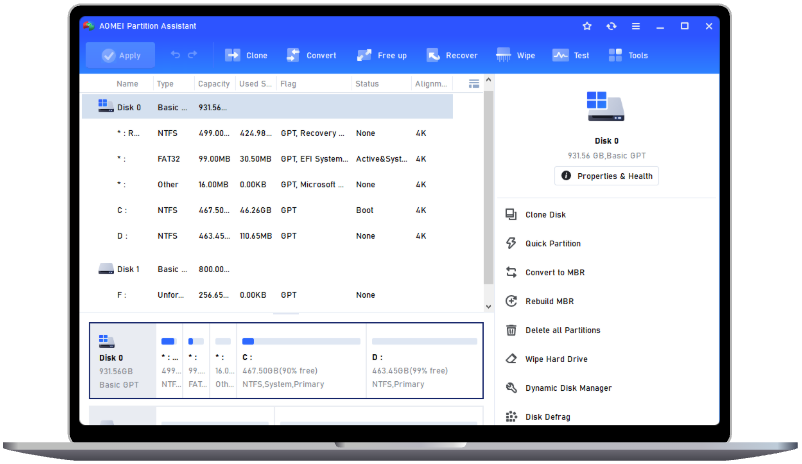How to Increase Partition Size of Windows 10 Easily and Safely?
Do you want to increase partition size in Windows 10? This article will show you how to do it with a professional third-party tool easily and safely.
Do you need to increase partition size for Windows 10?
Is your computer running slower and slower after upgrading to Windows 10? It is a symbol that your system partition is not enough to store the applications. Thus, you have to find a way to increase the system partition size for running Windows 10 at a normal or faster speed. If your system partition is running out of space, increasing partition size is necessary.
How to increase partition size in Windows 10?
There are two ways for you to increase partition size for Windows 10. One is using Windows inbuilt program and the other is using a reliable third-party disk manager. I will show you one by one.
│Increase partition size for Windows 10 with Disk Management
Windows 10 has a built-in tool called Disk Management for managing disks, it is able to extend and shrink the volume. If you plan to increase partition size, you can follow the steps below:
Step 1. Press “Windows+R”, type in “diskmgmt.msc” and hit ENTER.
Step 2. After that, you can see the main interface of Disk Management. Select the partition you want to increase and right-click, choose “Extend Volume”.
Note: Sometimes, you may encounter Extend Volume grayed out, that is because Extend Volume of Disk Management can only support to extend partition that has unallocated space neighbor to the partition on the right side. Some people may have questions. What if there is no unallocated space here or the unallocated space is on the left? Well, Disk Management cannot solve these problems. Therefore, you need to find another solution.
│Increase partition size for Windows 10 with AOMEI Partition Assistant
AOMEI Partition Assistant is a great powerful tool for managing disks. It can resize partition, create partition, delete partition, format partition, etc., and it supports almost all Windows systems no matter Windows PC system, or Windows Server. Different clients have different versions to get a better performance. More importantly, it completely compensates for the limitations of Disk Management. It can be extended no matter if there is adjacent unallocated space on the right side of the target partition.
The Best Windows Disk Partition Manager and PC Optimizer
To increase partition size for Windows 10, AOMEI Partition Assistant provides at least three methods. But first, you need to download AOMEI Partition Assistant, install, and launch it.
This is the main interface of AOMEI Partition Assistant Standard, you can see all disks and partitions current status from here. In this picture, there is no unallocated space behind C: drive. That means you cannot increase system partition with Disk Management. AOMEI Partition is full of magic. It can increase the C: drive in a few steps.
Method 1. Merge Partitions.
Right-click C: drive, select Advanced> Merge Partitions. Then, you can merge the C: drive and the adjacent drive(usually D: drive) and all the unallocated space even they are not beside the C: drive. Click Apply after all the operations.
Method 2. Move free space from other partitions.
As the picture shows, the D: drive has many free spaces, you can right-click D: drive and select Resize Partition or Split Partition to move some free space out, then right-click C: drive and click Resize Partition or Merge Partition to extend the C: drive with this free space. Click Apply.
Method 3. Allocate free space
In addition, you can upgrade to the Professional edition to employ an easier way to increase partition size in Windows 10. Allocate Free Space allows you to allocate some free space directly from one drive to another. The whole process is simpler than method 1 and method 2. As shown in the figure, you can allocate the space of D drive to C drive:
Conclusion
This post offers two tools to increase partition size Windows 10. By comparison, AOMEI Partition Assistant Standard shows more advantages than Disk Management. Its versatile features can fill the needs of different users, so it is easy to make Windows 10 increase partition size with the help of AOMEI Partition Assistant, if you want to increase partition in Windows Server, please upgrade to AOMEI Partition Assistant Server.

